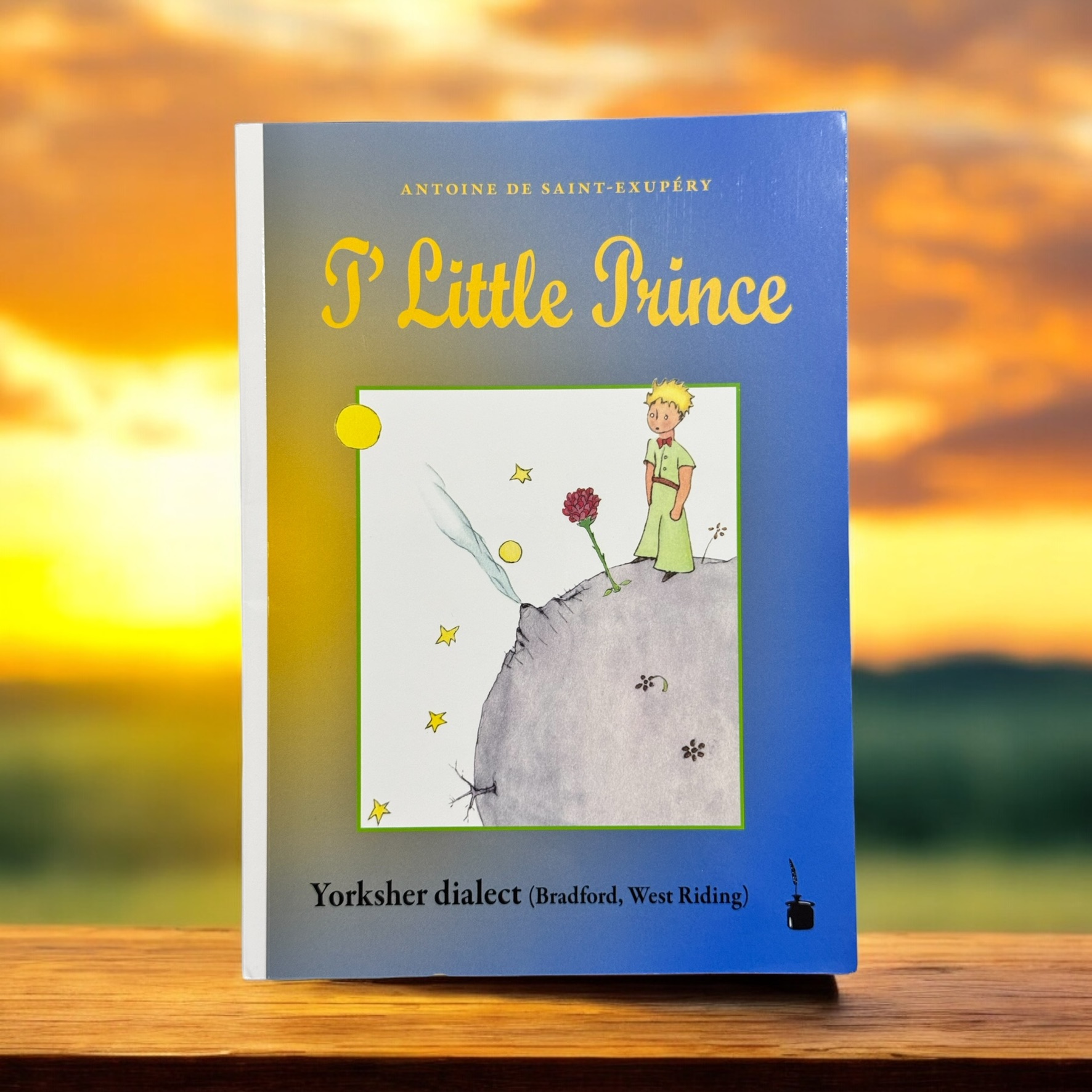
T’Little Prince — in Yorkshire dialect of English.
The Yorkshire dialect, often referred to as “Tyke,” is one of the most distinctive and storied dialects in England. It is spoken in the historic county of Yorkshire, the largest county in England, and carries with it a rich cultural and historical legacy.
The Yorkshire dialect has deep roots in Old English, with strong influences from Old Norse due to the Viking settlements in the region during the early medieval period. The Danelaw, a historical region of England under Viking control, included much of Yorkshire, leaving a lasting impact on the dialect.
The Industrial Revolution further shaped the Yorkshire dialect, as Yorkshire became a hub for industries like wool, coal mining, and steel production. This led to the development of distinct regional variations within Yorkshire itself, reflecting different industrial and rural communities. Yorkshire people often have a strong regional identity, and the dialect is a significant part of this. The dialect is a source of pride and is sometimes used to distinguish “true” Yorkshire folk from outsiders.
Compared to Standard British English, the Yorkshire dialect is more conservative in its retention of older English forms, particularly in vocabulary and grammar. Phonologically, Yorkshire English is less influenced by the southern Received Pronunciation (RP) and has a more “flat” intonation pattern, making it sound distinctively different. Yorkshire dialect shares some similarities with Scottish English, particularly in the use of older pronouns like “thee” and “thou.” However, the accents are quite different, with Scottish English having a more rhotic pronunciation (pronouncing the “r” sound strongly), which is not typical in Yorkshire. Vocabulary in Yorkshire and Scottish English sometimes overlaps due to shared Anglo-Saxon and Norse heritage, but each has its own unique set of local words and phrases.
The Yorkshire dialect is known for its unique pronunciation. For example, the short “u” sound in words like “cut” is often pronounced more like “put,” so “cut” sounds closer to “coot.” The long “a” sound in words like “bath” or “grass” is typically pronounced with a flat “a,” as in “cat,” making it “bath” instead of the southern English “bahth.” The “t” sound at the end of words is often dropped, resulting in words like “right” sounding like “reight” (pronounced “rate”).
The Yorkshire dialect retains many old Norse and Anglo-Saxon words that have fallen out of use in standard British English. For example, “beck” (a small stream) and “ginnel” (a narrow passageway) are commonly used in Yorkshire. “Thee” and “thou” are still used in some rural areas as informal pronouns, reflecting an older form of English that was more widespread across the country in the past.
The use of the definite article “the” is often shortened to “t'” (as in “t’pub” for “the pub”). This is one of the most recognizable features of the Yorkshire dialect. Double negatives are also more common in Yorkshire dialect, reflecting older patterns of English speech that were once more widespread.
Yorkshire has many unique phrases and expressions that are not found elsewhere in England. For example, “Eeh by gum” is an exclamation of surprise or amazement. “Ow do?” is a common greeting in Yorkshire, equivalent to “How are you?” in Standard English.


